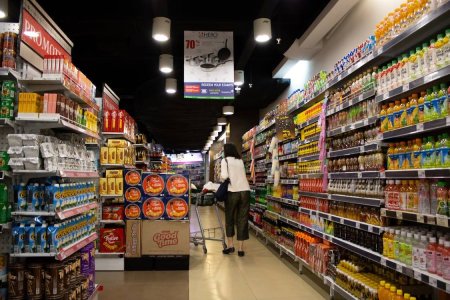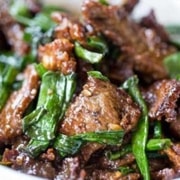Get ready for higher prices! Price freezes in two major supermarkets are ending
- Replies 13
With the hefty cost of living playing havoc for Australians, many shoppers were relieved when Coles and Woolworths introduced a price freeze on numerous products in the middle of last year, offering them some financial breathing room.
But alas, all good things must come to an end.
It’s been reported that major supermarket Coles is set to end its price freeze on select products on Tuesday, January 31. Meanwhile, Woolworths already lapsed late last December.
This means prices on hundreds of items across both Coles and Woolworths shelves will go up, unless they introduce new pricing initiatives.
These developments are quite a nasty surprise for Australian consumers still grappling with high cost-of-living pressures as evidenced by astronomic inflation rates last year.
Coles and Woolworths have both stated they are committed to continuing to support customers through pricing adjustments. However, it is unclear what Coles plans to do once its price freeze ceases at the end of this month, but there are signals Aussie shoppers may see similar initiatives moving forward.

In an article by The Sydney Morning Herald, a spokesperson said: ‘Australian households are facing rising cost of living pressures, which is why we are continuing to invest in initiatives like “Dropped & Locked” to deliver trusted value to our customers.’
‘We will continue to focus on value through weekly specials, Down Down and Everyday Low Prices, which offer key staples at trusted pricing for the longer term.’
In October, Coles warned suppliers that they may not accept requests for price increases even if suppliers were able to justify their bids amid soaring prices of goods. Instead, suppliers were asked to cut operational costs.
Meanwhile, Woolworths is said to still be holding prices of goods covered by its previous price freeze.
‘We know cost-of-living pressures are being felt by Australian families, and throughout 2023 we will continue to work hard to help them save each time they shop with us,’ said a representative.
‘We will continue to review each cost increase request from our suppliers on a case-by-case basis, working together to sensitively manage market-wide inflationary pressures.’
Aussie consumers would surely benefit greatly if Coles and Woolworths follow through on their promises, considering there are concerns future interest rate hikes could cause the prices of grocery items to rise even higher.
Experts are torn as to what Aussies are in for in terms of interest rates this year, with some saying only one interest rate hike is expected, occurring within the first three months of 2023 and bringing the cash rate to 3.35 per cent.
However, other less optimistic outlooks expect more for the rest of 2023.

Interest rate rises can cause a ripple effect, where costs get passed down the chain. With increased cash flow costs, producers are forced to increase prices of the goods they are providing to the supermarkets in order to cover those costs.
Ultimately, this places further pressure on consumers who will be faced with higher prices when at the supermarket.
In addition, market speculation and fluctuations due to the anticipation of rising interest rates can have an impact too.
Food commodities are traded on a global market and increased economic uncertainty as a result of rising interest rates can lead to market jitters, which could see prices for many food products increase rapidly.
This could cause major instability in the Australian food market, putting the cost of food out of the reach of a high number of households and further exacerbating the cost-of-living crisis.

According to retail analysts, fruit and vegetable prices have shot up 16 per cent in the past year alone, while bread and cereal prices have seen an increase of 10 per cent.
Last September saw a record-high consumer inflation rate for Australia at 7.3 per cent, which was attributed to soaring fuel and energy prices, and global downstream supply issues caused by the Russian invasion of Ukraine.
In addition, foul weather, including massive floods hitting the east coast of Australia, contributed to the squeeze.
Source: YouTube/9 News Australia
So, what are your thoughts on this? Share them with us in the comments below!
But alas, all good things must come to an end.
It’s been reported that major supermarket Coles is set to end its price freeze on select products on Tuesday, January 31. Meanwhile, Woolworths already lapsed late last December.
This means prices on hundreds of items across both Coles and Woolworths shelves will go up, unless they introduce new pricing initiatives.
These developments are quite a nasty surprise for Australian consumers still grappling with high cost-of-living pressures as evidenced by astronomic inflation rates last year.
Coles and Woolworths have both stated they are committed to continuing to support customers through pricing adjustments. However, it is unclear what Coles plans to do once its price freeze ceases at the end of this month, but there are signals Aussie shoppers may see similar initiatives moving forward.

Many Aussies are in for quite a surprise this year with major supermarkets’ price freezes ending. Stock Image Credit: Pexels/Anna Shvets
In an article by The Sydney Morning Herald, a spokesperson said: ‘Australian households are facing rising cost of living pressures, which is why we are continuing to invest in initiatives like “Dropped & Locked” to deliver trusted value to our customers.’
‘We will continue to focus on value through weekly specials, Down Down and Everyday Low Prices, which offer key staples at trusted pricing for the longer term.’
In October, Coles warned suppliers that they may not accept requests for price increases even if suppliers were able to justify their bids amid soaring prices of goods. Instead, suppliers were asked to cut operational costs.
Meanwhile, Woolworths is said to still be holding prices of goods covered by its previous price freeze.
‘We know cost-of-living pressures are being felt by Australian families, and throughout 2023 we will continue to work hard to help them save each time they shop with us,’ said a representative.
‘We will continue to review each cost increase request from our suppliers on a case-by-case basis, working together to sensitively manage market-wide inflationary pressures.’
Aussie consumers would surely benefit greatly if Coles and Woolworths follow through on their promises, considering there are concerns future interest rate hikes could cause the prices of grocery items to rise even higher.
Experts are torn as to what Aussies are in for in terms of interest rates this year, with some saying only one interest rate hike is expected, occurring within the first three months of 2023 and bringing the cash rate to 3.35 per cent.
However, other less optimistic outlooks expect more for the rest of 2023.

Aussie consumers are at the mercy of interest rate hikes for the rest of the year. Stock Image Credit: Pexels/Hobi industri
Interest rate rises can cause a ripple effect, where costs get passed down the chain. With increased cash flow costs, producers are forced to increase prices of the goods they are providing to the supermarkets in order to cover those costs.
Ultimately, this places further pressure on consumers who will be faced with higher prices when at the supermarket.
In addition, market speculation and fluctuations due to the anticipation of rising interest rates can have an impact too.
Food commodities are traded on a global market and increased economic uncertainty as a result of rising interest rates can lead to market jitters, which could see prices for many food products increase rapidly.
This could cause major instability in the Australian food market, putting the cost of food out of the reach of a high number of households and further exacerbating the cost-of-living crisis.
Key Takeaways
- Supermarket giants Coles and Woolworths have imposed a price freeze on numerous products, however Woolworths ended its own last December, while Coles' is set to end on January 31.
- Interest rate rises could also see grocery prices surge. Experts are torn, however, on how many Aussies can expect the government to enact this year.
- Fruit and vegetable prices in Australia have risen by 16 per cent over the past 12 months, with bread and cereal prices up 10 per cent.
- Weather conditions, such as floods, have impacted on produce, resulting in higher prices.
Last September saw a record-high consumer inflation rate for Australia at 7.3 per cent, which was attributed to soaring fuel and energy prices, and global downstream supply issues caused by the Russian invasion of Ukraine.
In addition, foul weather, including massive floods hitting the east coast of Australia, contributed to the squeeze.
Source: YouTube/9 News Australia
So, what are your thoughts on this? Share them with us in the comments below!







